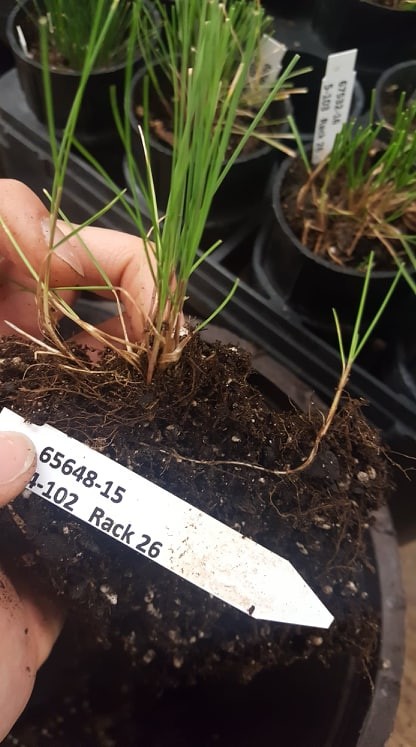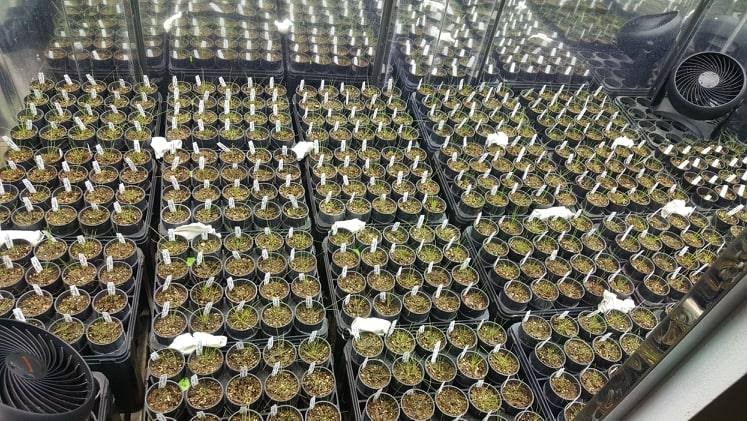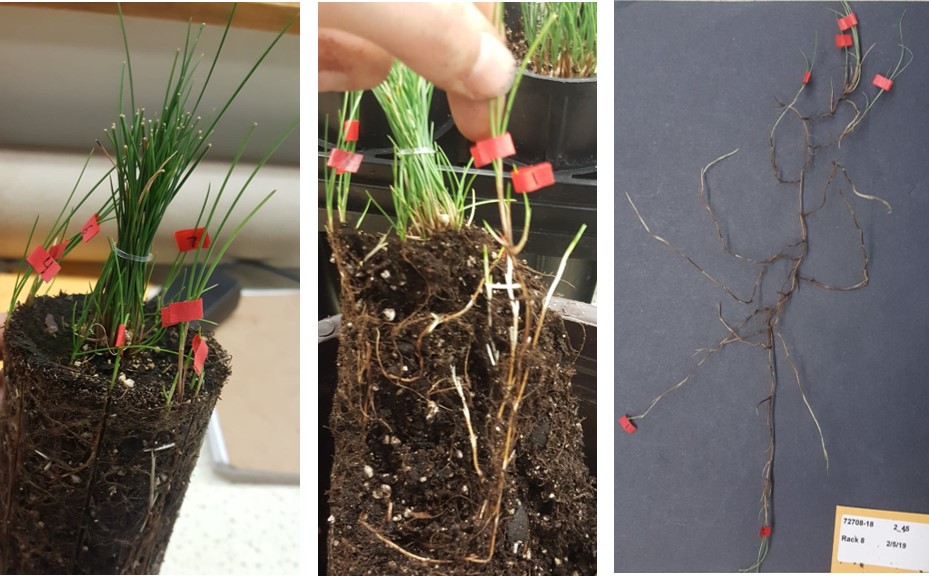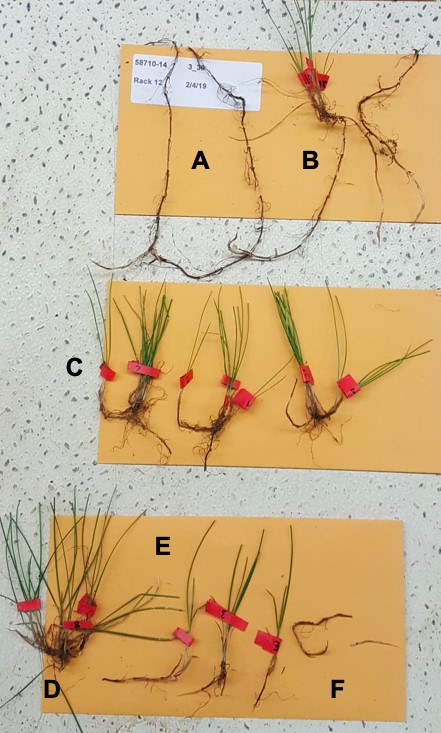By Nicole Mihelich
Rhizomes are an important physiological feature for many turfgrasses, and thus may be a trait deserving of more focus to cool-season turfgrass breeding and improvement. Rhizomes are underground stems that grow horizontally and can form roots as well as new daughter plants (Figure 1). These specialized stems can store sugars, water, and nutrients, allowing for resilience and competitiveness when filing in a lawn, and also when facing seasonal temperature and moisture variation and environmental stresses. Additionally, formation and interlocking of rhizomes is thought to be helpful when harvesting and transplanting thick mats of vegetation in sod production. Kentucky bluegrass has the ability to form rhizomes, and is the predominant sod species in Minnesota and the surrounding states. However, Kentucky bluegrass is generally considered a high-input turfgrass species, often requiring a considerable amount of water, fertilizer, mowing, and other inputs. Thus, finding a turfgrass species that requires less inputs would be beneficial for sod producers, consumers, and the environment.
Fine fescues are a group of turfgrasses with excellent potential for low-input use. Currently, consumers establish turf areas with seed of these grasses as fine fescue sod production is very limited. A subspecies of fine fescue, called strong creeping red fescue (Festuca rubra ssp. rubra), displays robust rhizomatous growth that parallels Kentucky bluegrass. The investigation of more rhizome-intensive traits and improvement of this underutilized fine fescue species for sod shows promise for meeting the demand for low-input options in sod production.
To assess the potential for strong creeping red fescue use in sod production, we are assembling plant populations called accessions, which are comprised of plant materials collected at particular areas over their historical habitat. We will use these accessions to capture maximum diversity overall as well as the formation of rhizomes and tillers (above-ground stems). Most recently, a population of 96 strong creeping red fescue accessions from across Eurasia was grown in a growth chamber experiment alongside fine fescue and Kentucky bluegrass cultivar controls. Four plants from each accession were grown from seed and transplanted after one month into individual conetainers in a growth chamber for three months (Figure 2). The plants were non-destructively phenotyped every two weeks for tillering and daughter plant formation. At the end of the three months, plants were destructively sampled and extensive data was taken on both above- and below-ground traits, including rhizome number, length, girth, number of nodes, and features such as branches, roots, and aerial shoots (Figure 3).
Preliminary analysis of the developed population revealed extensive variability among accessions. Some accessions had more daughter plants and rhizomes than the aggressively rhizomatous controls (strong creeping red fescue cultivar ‘Navigator II’ and the Kentucky bluegrass cultivar ‘Shamrock’); however, only 36% of the accessions formed at least one rhizome. Other traits, such as type of rhizome, number of tillers, and crown characteristics were also highly variable (Figure 4). These traits reflected differences in the way that accessions allocate energy for growth to vertical growth, horizontal spread through crown growth, or horizontal spread through rhizome and daughter plant growth. Ideally, a good quality low-input turf would allocate its growth to a balance of these latter two horizontally spreading growth habits.
This first evaluation of strong creeping red fescue has shed light on the diversity of tiller and rhizome growth. Observations in the growth chamber do not necessarily reflect what may be observed in the field; therefore, future studies will utilize the best and worst horizontally spreading plants from growth chamber studies in replicated field experiments. We hope that findings from this work can be used by turfgrass breeders to develop new low-input sod cultivars.
This research is part of the “Filling a Critical Need: Diversifying Sod Production with Sustainable Turfgrasses” project in partnership with Purdue University, funded by the U.S. Department of Agriculture’s Agricultural Marketing Service under the Specialty Crop Multi-State Program.



